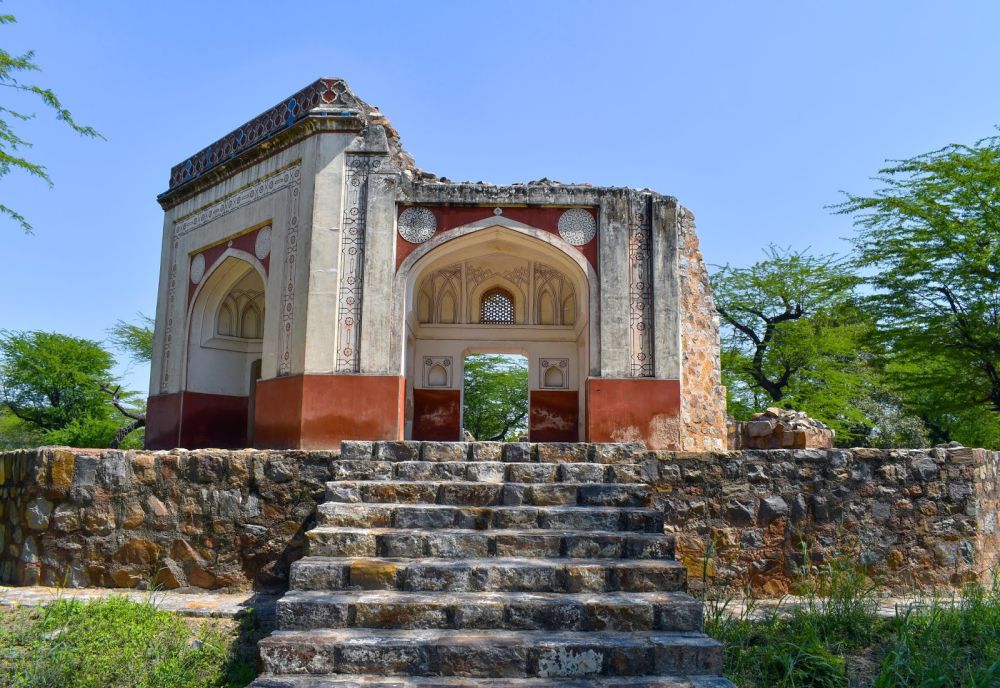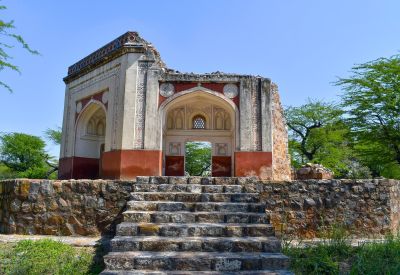

The Batashewala Complex is a remarkable historical site located in Delhi, India, known for its Mughal-era architecture. Visitors can spend time admiring the intricate designs and the artistry of the three main structures within the complex: the Batashewala Tomb, the Mirza Muzaffar Hussain's Tomb, and the Chote Batashewala Mahal. Each of these monuments showcases the decadence of Mughal architecture with detailed stone inlays, ornate carvings, and geometrical patterns characteristic of the period. The complex is thought to have been constructed during the reign of Emperor Shah Jahan, aligning with the aesthetic of the iconic Taj Mahal in Agra. As you walk through the complex, you'll notice the red sandstone and marble structures that have stood the test of time to tell the tales of a glorious past. This activity is not just a walk but a lesson in history and art, ideal for history buffs and cultural enthusiasts seeking to delve into India's rich heritage.
For photography enthusiasts, the Batashewala Complex offers a picturesque backdrop with its lush gardens and ancient structures. The play of light and shadow among the ornate arches and the contrast between the red sandstone and white marble provide ample opportunities for both amateur and professional photographers to capture stunning images. With the right lighting, usually during the golden hours of sunrise or sunset, the textures and patterns of the Mughal architecture come to life. This activity involves exploring various angles and perspectives to create a diverse portfolio of images that encapsulate the essence of this historic site. Although you can click photographs with your camera for personal use, be sure to check if there are any restrictions or permits required for professional shoots.
Surrounding the Batashewala Complex are stretches of green where visitors can lay down their picnic blankets and enjoy a leisurely afternoon. A picnic here is a unique experience, combining relaxation with the splendor of the complex's historical surroundings. Bring along a basket of your favorite snacks, a good book, and perhaps some traditional Indian games like carrom or chess to enhance the experience. As you relish your meal and unwind, you'll find yourself transported back in time amidst the grandeur of the Mughal dynasty. The peaceful atmosphere also makes it a perfect spot for families to spend quality time together or for individuals seeking a tranquil retreat from the city's hustle and bustle.
Guided heritage walks offer a deep dive into the Batashewala Complex's rich history and its place within Delhi's wider cultural landscape. Knowledgeable guides provide fascinating insights into the Mughal Empire, the art and architecture of the times, and the stories of the people who walked these grounds centuries ago. These walks usually span a couple of hours and include visits to nearby monuments as well, such as the Humayun's Tomb and the Sunder Nursery. It's an educational and immersive experience suitable for travelers who wish to appreciate the historical context of the places they visit and understand the cultural significance behind the stunning architecture.
For artists and those passionate about drawing or painting, the Batashewala Complex serves as an excellent muse. With its historical edifices and serene environment, artists can set up their easels and capture the timeless beauty of the site on canvas or in their sketchbooks. The myriad details on the tombs and the landscapes offer endless inspiration for creating art. Whether you are a novice seeking to practice your skills or an accomplished artist in search of new subjects, the complex provides a quiet and inspiring setting to let your creativity flow. Remember to bring all necessary supplies and take care not to damage the site while engaging in your artistic pursuits.
The tranquil surroundings of the Batashewala Complex offer a perfect environment for yoga and meditation enthusiasts. Whether you're a beginner looking to learn the basics or a seasoned practitioner seeking a peaceful locale for your daily routines, the complex provides an open space where you can stretch, breathe, and meditate amidst history. Early mornings are especially recommended, as the calmness of dawn complements the meditative experience, with birdsong adding to the serene ambiance. Engaging in yoga at this historical site not only benefits the body and mind but also connects you spiritually to the ancient surroundings.
Adjacent to the Batashewala Complex is the sprawling Sunder Nursery, which boasts an array of flora and fauna, including a diverse bird population. Bird watchers can take this opportunity to explore the nursery's habitats to spot and observe various species of resident and migratory birds. The complex and surrounding greenery serve as a haven for birdlife, providing ample opportunities for ornithological enthusiasts to indulge in their hobby. Ensure you bring your binoculars, a bird guide, and perhaps a notepad to record your sightings. This activity offers a delightful juxtaposition of natural wonders in the heart of a historical site.
Occasionally, the Batashewala Complex hosts interactive workshops on topics ranging from history and architecture to art and conservation. These workshops, typically run by historians, conservationists, or local artisans, engage participants in a hands-on learning experience about the Mughal era, its art forms, and the methods employed to preserve such historical sites. Some workshops also involve traditional crafts, such as stone inlay work or calligraphy, which were prevalent during the Mughal period. These activities are designed to educate and also to revive interest in the fading art forms associated with India's rich heritage.
Occasionally, the historical backdrop of the Batashewala Complex becomes an enchanting setting for light and sound shows. These shows are a spectacle of illumination synced with audio narratives that bring to life the history of the complex and the era it represents. Though not a regular feature, such events provide a unique evening experience, allowing visitors to view the monuments in a different light, literally. The narratives are often accompanied by traditional music, and it's advisable to check in advance for show timings and ticket availability.
While there isn't a dedicated eatery within the Batashewala Complex, the region around it is dotted with food stalls and eateries that offer a taste of traditional North Indian and Mughlai cuisine. As part of your visit to the complex, you can explore the local culinary offerings such as kebabs, biryanis, and various breads like naans and parathas. The experience involves indulging in authentic flavors that have evolved over centuries and form an integral part of Delhi's cultural identity. You can savor the rich and aromatic dishes while reflecting on the historical and cultural journey you've taken through the day.
